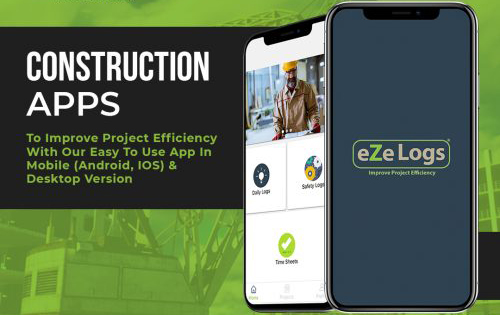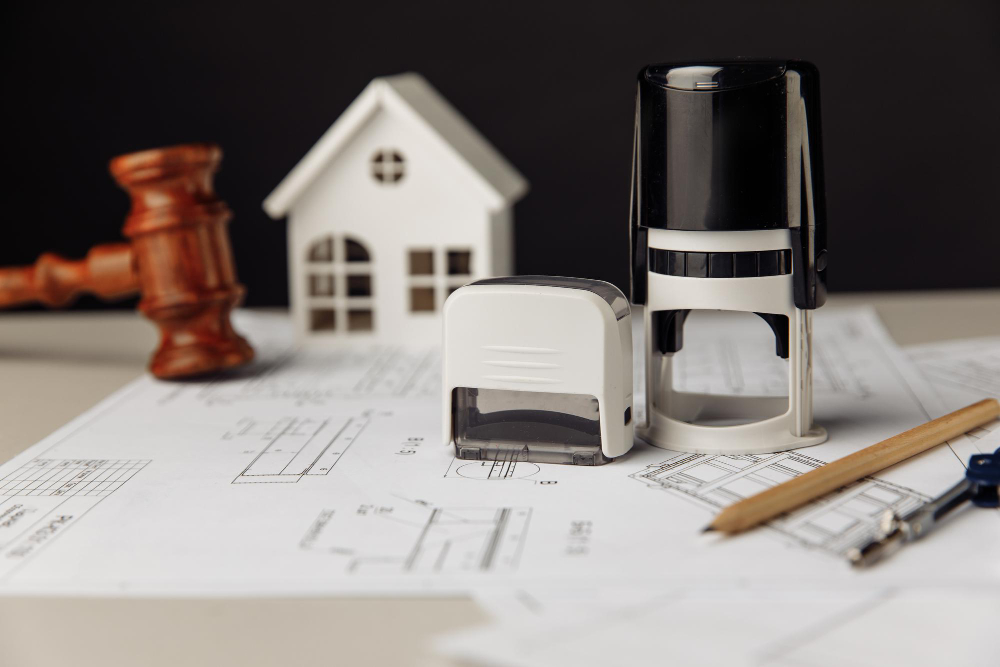Welcome to the world of construction where massive projects take shape and buildings rise against the skyline. Behind the scenes of this awe-inspiring process lies a crucial challenge – managing the intricate web of construction equipment. From bulldozers to cranes, each piece plays a vital role in the realization of architectural dreams. But with great power comes great responsibility, and managing these heavy-duty machines efficiently has always been a daunting task.

Imagine a scenario where construction equipment could be tracked and managed with precision, allowing supervisors to know exactly where each machine is at any given moment. Sounds like science fiction? Well, not anymore. Enter the game-changer – Geofencing and Equipment Tracking. In this article, we’ll dive into this innovative technology and explore how it’s revolutionizing construction equipment management, turning what was once a logistical headache into a streamlined and effective process.
The construction industry has always embraced technology to enhance productivity, safety, and overall project efficiency. Geofencing and equipment tracking mark the latest chapter in this ongoing saga of innovation. So, grab your hard hat and join us as we uncover the fascinating world of geofencing and its impact on the construction landscape.
The Basics of Geofencing
Understanding Geofencing Basics:
Geofencing, the heart of modern location technology, is simpler than it sounds. It involves creating virtual boundaries in the real world, enabling automatic actions when someone or something enters or exits these predefined areas. Think of it as a digital fence that triggers events like notifications on your phone when you enter a certain area. This concept has evolved beyond our smartphones, finding practical use in various industries, especially construction. Let’s explore how this technology works and why it’s transforming the construction equipment management game.
The Significance in Construction
Significance in Construction:
In the world of construction, where every nail and beam matters, geofencing and equipment tracking emerge as pivotal tools. Managing construction equipment within sprawling sites is a challenge of its own. The significance of geofencing becomes evident in its ability to provide real-time location data for these valuable assets. With the complexity of modern construction projects, knowing where each piece of equipment is located at any given moment becomes more than just a convenience – it’s a necessity. This technology addresses crucial concerns such as equipment security, efficient resource allocation, and project timeline adherence. In this section, we delve into the profound impact of geofencing and equipment tracking on construction management practices.
How Equipment Tracking Works
The mechanics behind equipment tracking through geofencing technology are surprisingly straightforward yet incredibly effective. Imagine a GPS for construction equipment. By incorporating GPS (Global Positioning System) and other precise positioning technologies, equipment can be accurately tracked in real time. Small tracking devices are attached to each piece of machinery, transforming them into smart assets. These devices communicate with a central system that creates virtual boundaries – the geofences. When equipment crosses these digital thresholds, the tracking system springs into action, recording movement, triggering alerts, and allowing managers to monitor the equipment’s status remotely. In this section, we’ll delve deeper into this innovative process and its application in the construction industry.
Benefits of Geofencing and Equipment Tracking
Embracing geofencing and equipment tracking in the construction realm yields a treasure trove of benefits that extend beyond mere location awareness. This dynamic duo redefines how construction companies manage their assets and execute projects. Let’s unravel the advantages:

- Enhanced Security: Bid farewell to sleepless nights worrying about equipment theft. Geofencing acts as a digital sentry, immediately alerting you if a piece of machinery ventures beyond its designated zone.
- Optimized Utilization: Resource allocation becomes a breeze as geofencing enables real-time monitoring of equipment usage. Idle assets can be redirected to areas where they’re needed most, maximizing efficiency.
- Reduced Downtime: Proactive maintenance becomes the norm. Geofencing triggers alerts when equipment approaches maintenance thresholds, minimizing unexpected downtime and costly delays.
- Improved Project Planning: Construction timelines are notorious for unexpected shifts. Geofencing’s accurate tracking aids in creating more precise schedules and allocating resources effectively.
- Cost Savings: The cumulative effect of secure equipment, optimized utilization, and reduced downtime translates to substantial cost savings over time. Additionally, insurance premiums can shrink when theft risk is diminished.
In this section, we unpack these benefits, showcasing how geofencing and equipment tracking aren’t just game changers; they’re bottom-line boosters.
Implementation Challenges and Solutions
Navigating Implementation Challenges:
While the promises of geofencing and equipment tracking are alluring, embarking on their implementation journey comes with its share of challenges. The initial hurdles can make even the most enthusiastic construction manager pause. However, fear not, for every challenge has a solution waiting in the wings:
- Initial Costs: The upfront investment can be daunting. To overcome this, consider a phased approach. Start by implementing the technology on high-value equipment and expand gradually as you witness the benefits firsthand.
- Technology Integration: Integrating new technology into existing systems can be complex. Choose solutions that offer seamless integration or work with tech-savvy professionals to bridge any gaps.
- Employee Resistance: Change can be met with resistance. Educate your team about the advantages of geofencing and equipment tracking. When they see how these tools simplify their work, resistance tends to fade.
- Data Security Concerns: Sharing location data might raise security eyebrows. Opt for solutions that prioritize data encryption and compliance with industry regulations to alleviate concerns.
By anticipating these challenges and embracing practical solutions, construction companies can successfully introduce geofencing and equipment tracking, transforming potential roadblocks into stepping stones toward efficiency and improved management.
Future Trends in Equipment Management
Anticipating Future Trends in Equipment Management:
The world of construction equipment management is evolving at an astonishing pace, and geofencing and equipment tracking are just the beginning. As technology continues to advance, here’s a glimpse into what the future holds:
- AI-Powered Predictive Maintenance: Imagine machines that predict their own maintenance needs. Artificial intelligence algorithms can analyze real-time data from tracked equipment to forecast maintenance requirements, reducing downtime and extending equipment lifespan.
- Integration with Building Information Modeling (BIM): Geofencing and equipment tracking are set to integrate seamlessly with BIM systems. This integration will create a holistic digital ecosystem, enabling better coordination between construction phases, equipment deployment, and project timelines.
- Remote Equipment Operation: As remote work becomes more prevalent, remote equipment operation might follow suit. With geofencing and tracking, supervisors could remotely monitor and operate equipment, opening doors to increased efficiency and reducing the need for on-site presence.
- Environmental Impact Tracking: Future iterations of geofencing and tracking could encompass environmental impact metrics. Construction companies could monitor fuel consumption, emissions, and other ecological factors, aligning their practices with sustainability goals.
- Enhanced Geofencing Accuracy: Geofencing precision will reach new heights, with advanced technology ensuring virtual boundaries are incredibly accurate. This will be particularly useful in urban construction environments with limited space.
In this final section, we peek into the crystal ball of construction equipment management, where geofencing and tracking serve as the foundation for even more transformative developments. The future is bright, and it’s driven by innovation.
Final thoughts
In a realm where the clang of construction echoes and towering structures rise, the significance of geofencing and equipment tracking cannot be overstated. What once seemed like an insurmountable challenge – managing the intricate dance of heavy machinery – has now been revolutionized by these remarkable technologies.
Geofencing, with its virtual boundaries and automatic triggers, has transcended smartphones to find a new home in the world of construction. It has proven to be the beacon guiding managers through the complexities of large sites, ensuring each piece of equipment is precisely where it needs to be. This technology’s impact is felt in enhanced security, optimized resource utilization, and reduced project downtime.
Accompanied by equipment tracking, which harnesses the power of GPS and real-time data, geofencing becomes a dynamic duo that transforms not only the way equipment is managed but also the way construction projects are executed. From preventing theft and unauthorized use to facilitating predictive maintenance, the advantages are tangible and far-reaching.
As we bid farewell, it’s clear that geofencing and equipment tracking have unlocked new frontiers in construction equipment management. They are the architects of efficiency, sculptors of security, and conductors of cost savings. The construction industry, once reliant on manual oversight and guesswork, now stands poised at the forefront of technological progress.
So, to the construction companies, project managers, and visionaries, the message is clear: Embrace the change, adopt the innovation, and be prepared to thrive in a landscape where geofencing and equipment tracking reign supreme. The future is here, and it’s reshaping the very foundations of construction management.


